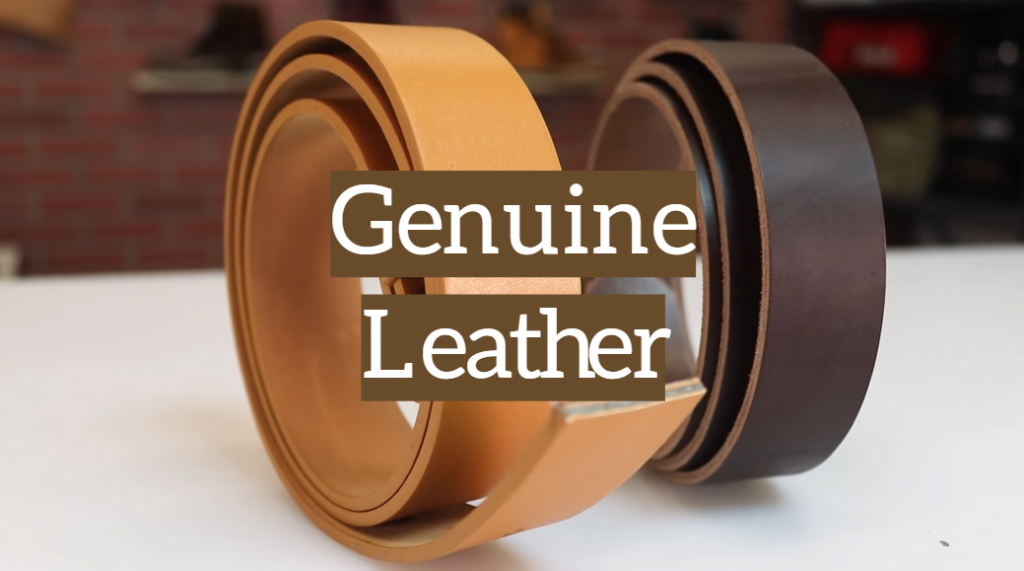
The huge advantage of all animal hides is that they are all natural. And all of these materials can be called genuine leather. But there is also the term “genuine leather” that defines the standard quality of natural animal hides. Many leather manufacturers believe that “genuine leather” is one of the worst natural materials when it comes to animal hides. Let’s divide the myths out of truth.
What is genuine leather, according to manufacturers?
Genuine leather is much more durable, so your new bag or briefcase made of this material will serve you for a very long time. It is also worth mentioning that genuine leather can “breathe” and ensure proper circulation of moisture – this quality is especially important for leather clothes. Genuine leather, unlike synthetic materials, does not cause allergies so people with sensitive skin are glad to buy the clothes made of this particular leather.
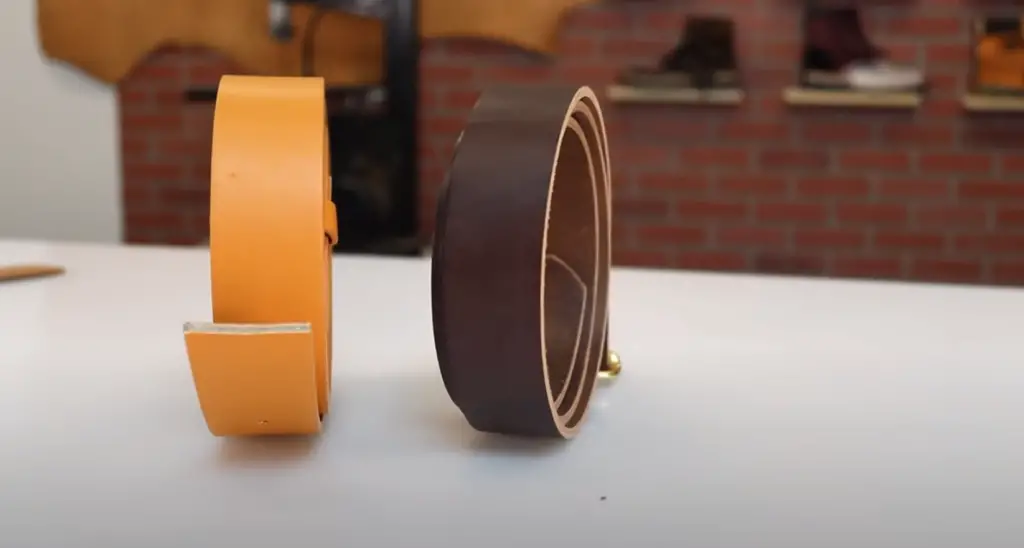
Opponents of genuine leather believe that this is a material of animal origin and has a poor quality. The second drawback of genuine leather — its price — stockbreeding is expensive and time-consuming, so genuine leather is much more expensive than its synthetic alternatives.
How is genuine leather produced?
To produce genuine leather, manufacturers use the wastes from the leather goods industry. Scraps of leather are grinded into a powder. Then with the help of artificial materials, they are glued together to give the appearance of a natural leather type with the help of a polyurethane coating. The major question is how much natural leather you can find the material called genuine leather. This amount is regulated by the laws of the country where this material is produced. For instance, in the USA it is forbidden to call the material “genuine leather” if it contains less than 50% of leather scraps.
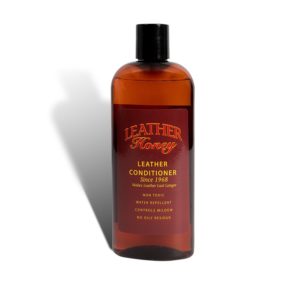 The Leather Honey brand is a cleaning solution that’s perfect for anyone that has a stained or heavily soiled genuine leather goods. It rids away dirt and grime fast, resulting in an excellent restoration job.
The Leather Honey brand is a cleaning solution that’s perfect for anyone that has a stained or heavily soiled genuine leather goods. It rids away dirt and grime fast, resulting in an excellent restoration job.
Features of genuine leather
- Genuine leather is still leather, despite all the drawbacks and poor quality;
- It is not as durable as the more expensive types;
- If you don’t want to spend a lot of money and don’t care how long the thing will be “in shape”, but you just want a nice-looking leather products right now, then it will work the best;
- Patina does not form on this leather. The variety of colors and textures is extremely wide due to the production conditions;
Is genuine leather real?
People often confuse the terms “real leather” or “genuine leather”. But genuine leather refers to leather of the lowest quality. In other words, this type of material does not look the same and does not feel as full-grain or even top-grain leather.
Many manufacturers usually apply the genuine leather term for the production of low-priced belts or shoes. There is also a low-quality patent leather (often referred to as split leather) that has a plastic and glossy surface.
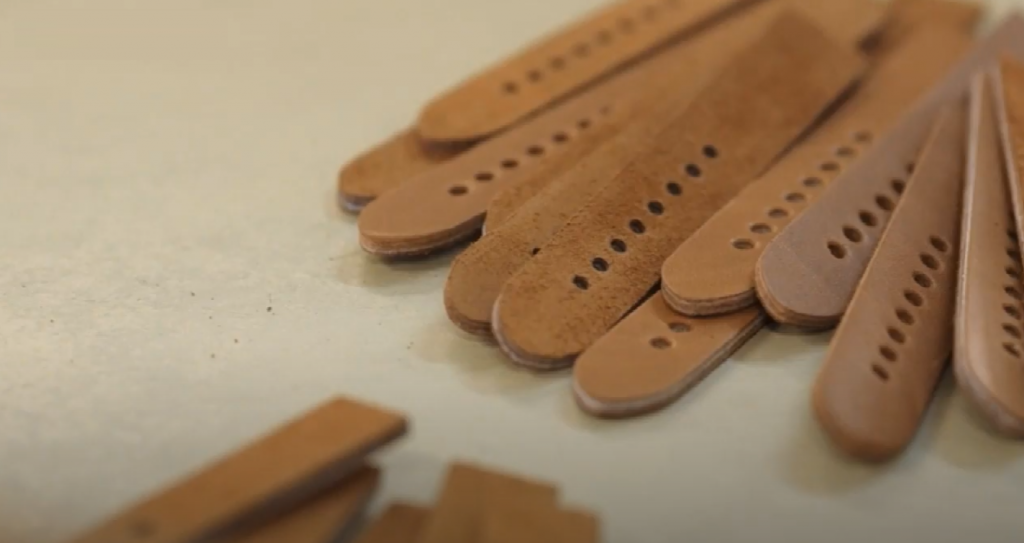
Genuine leather on the label means that this product is still a leather item. But the leather of the poorest quality is used for making this material.
Genuine leather is real but it looks much worse than high-quality leather materials. Such products are sold in lower-priced department stores, mall stores and under the category of the lower price range.
I should say that such a level of quality is acceptable when you need something cheap and natural. Keep in mind that bonded and bi-cast types can be used as other names for genuine leather.
The one thing you must remember: genuine leather is a term used in 2 cases. It denotes any leather type of a poor quality. And also it refers to the natural leather material.
Benefits of using genuine leather
- Affordable price;
- Simple to maintain in a nice condition;
- May last up to several years;
Cons of using genuine leather
- Genuine leather is a poor quality leather;
- It gets stretch marks;
- If you wear such a jacket during warm or hot weather, you will feel hot and sweaty;
Genuine leather vs PU leather: how to test?
- Artificial material does not preserve and does not transfer heat, and genuine leather almost immediately warms when you touch it;
- Genuine leather has a natural and unique pattern on the surface, and the artificial material is characterized by the repeating pattern of spots of the same size;
- Check the inside surface and edges. Genuine leather’s inside surface has the suede pile, and any artificial material will have a fabric instead of pile;
- Genuine leather is always heavier than artificial materials. Especially when it comes to leather jackets;
- New genuine leather shoes will never have a sharp chemical smell like artificial materials;
- This is a very easy and visual way to distinguish genuine leather from PU leather. Genuine leather always absorbs moisture;
- Genuine leather will never be smooth. The texture may be different, but to the touch it is always a bit rough. Artificial material is smooth and slippery when you touch it;
The care routine for genuine leather
Care routine is quite simple. Genuine leather doesn’t really need protective creams and lotions to nourish the material.
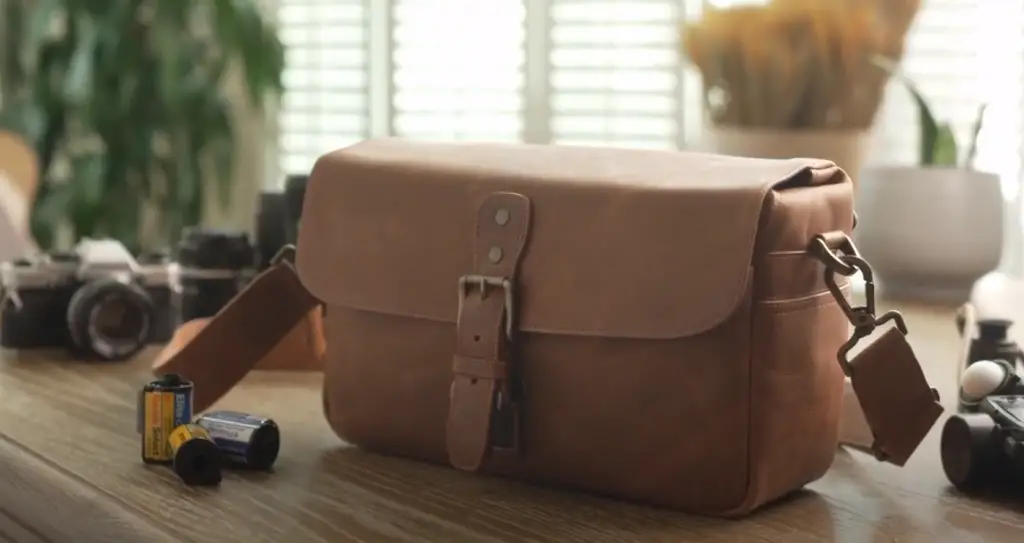
Mostly the care is reduced to wiping the genuine leather product with a damp cloth and a bit of moisturizing. Just prevent it from getting dry and being covered with cracks.
Polishing is another way to take care of genuine leather. Just make sure to pick the polishes with a powerful moisturizing effect. Another remedy is a cream or conditioner for keeping the leather moist. Cheap genuine leather won’t shine like other materials but it will be protected from cracks.
Different price tags for genuine leather types
Genuine leather type is the most affordable material. Still there are different price segments when it comes to genuine leather products:
- Budget price segment. Pig, bovine, cowhide materials are these inexpensive leather types distinguished by thickness, density and rigidity. To make the budget shoes and jackets, pigskin or cowhide leather is often used. Genuine leather belts and backpacks are most often made from durable bovine leather.
- Middle price segment. Rough calfskin, sheepskin, goatskin are soft and durable types of genuine leather. There are practically no creases on them. These leather materials are thin, but at the same time, they are of high quality and keep the shape perfectly.
Final thoughts
Buying a product from this type of leather reminds a lottery, on the terms of quality and durability. I recommend you to choose other leather types if you want your clothes and products to serve for many years. Genuine leather is only good for a short term.

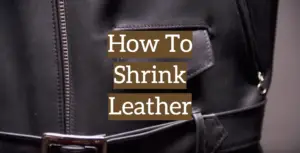

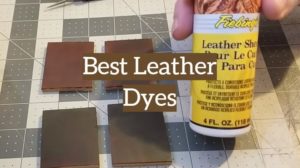






Wow! I learned a big time marketing tip today. It seems like people use genuine leather as a label to overprice and oversell products because it sounds authentic when in reality, it is one of the cheapest leather materials there is unless otherwise stated. I would have never known this had I not stumbled on this article. Going to share it around!
When you first hear the term genuine leather you probably think this is the best leather there could be, no? Or is it just me? Or wouldn’t have guessed this was the lowest quality leather there is. So strange that the word genuine is used to describe such a poor leather. I wonder how many people buy products with the label genuine leather thinking they just got a bargain, a real leather item at a great price. We do need to do our research better.